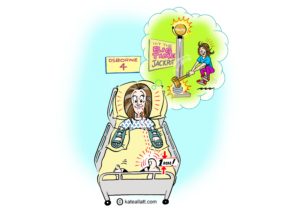Imagine the noise of a pneumatic drill and then a bomb exploding in your brain? Then imagine waking up inside your own coffin where you can think, feel, see and hear normally, but move absolutely nothing. AKA Locked In Syndrome. Worse still, imagine not being able to give a physical signal or blink to show that you are completely aware of yourself and your environment.

Well, that was my hell at just 39 years of age in February 2010. The indignity; the pain; the boredom; the anxiety; the fear of dying; the separation anxiety from my young children almost destroyed my ‘fight’ completely. The not knowing the next time a therapist/nurse would ‘look into my eyes’ to see if was trying to communicate something, gave me so much chest pain, was it a heart attack?
If only the medics knew how much I wanted to be back at home with my three children? Or that I didn’t just want to walk again, but run again? (I had been a 70 mile per week fell runner) I was written-off and spurred to prove the negative-thinking-expectation-lowering medics wrong.

Over 450 times, 7 days per week I would ‘will’ a different part of my body to move/move further/for longer than it ever had done before. I was obsessed with my own predetermined daily, bite-sized goals. I allowed myself a ten minute break after each set of 40 repetitive exercises. I did my exercises in addition to my three hours a day therapy sessions. In fact my rehab unit said that I pushed them harder than they pushed me! I was the ultimate self-management case study, before it even became an NHS buzz term!

It was in effect, Teasell’s repetitive, frequent and intensive theories put into practice. But I would also add the word ‘early’ treatment after my charity advocacy work. I could not always communicate my drivers, my needs, my goals, so friends and family needed to try to fill in the gaps on my behalf. Some of us want to run again, eat again, pick our grandchildren up at the school gates, drive again so finding suitable ways to communicate and understand patient motivators are completely fundamental.
Motivation is affected by both mood &/or executive dysfunction. I have always believed (as did @MoFarah at the Rio Olympics by the way),
‘Dream big, have big ambitions and work hard, then you’ll achieve anything.’
Your job is to ‘know’ your patients, equip them to be the best version of themselves and not to extinguish all HOPE.

Percy Pud 10K 2011
Kate Allatt TEDx speaker, pioneer/co-collaborator @ESCAPS. Internationally published author of ‘Running Free – Breaking out of Locked In Syndrome.’ KateAllatt.com @KateAllatt



Recent Comments